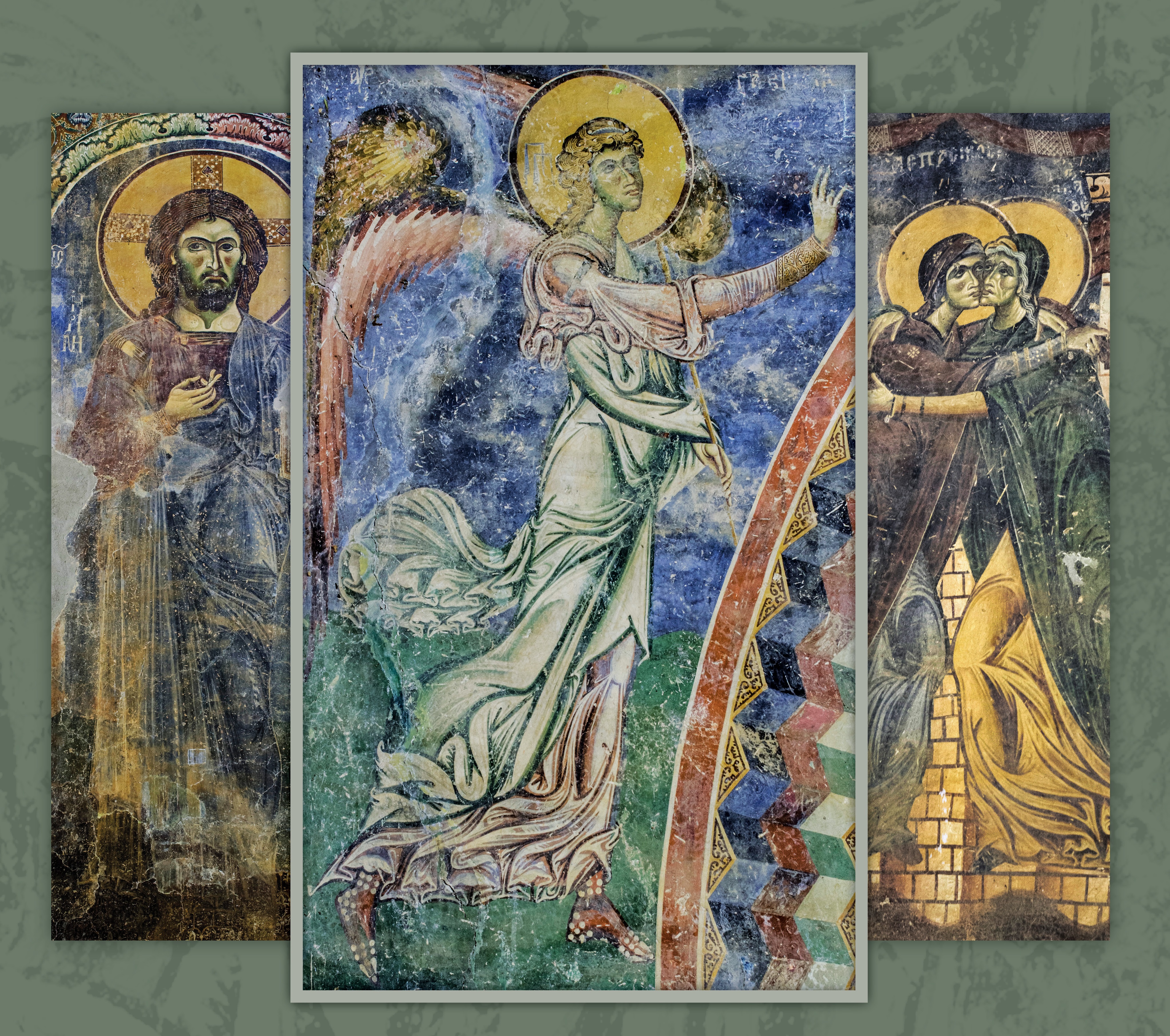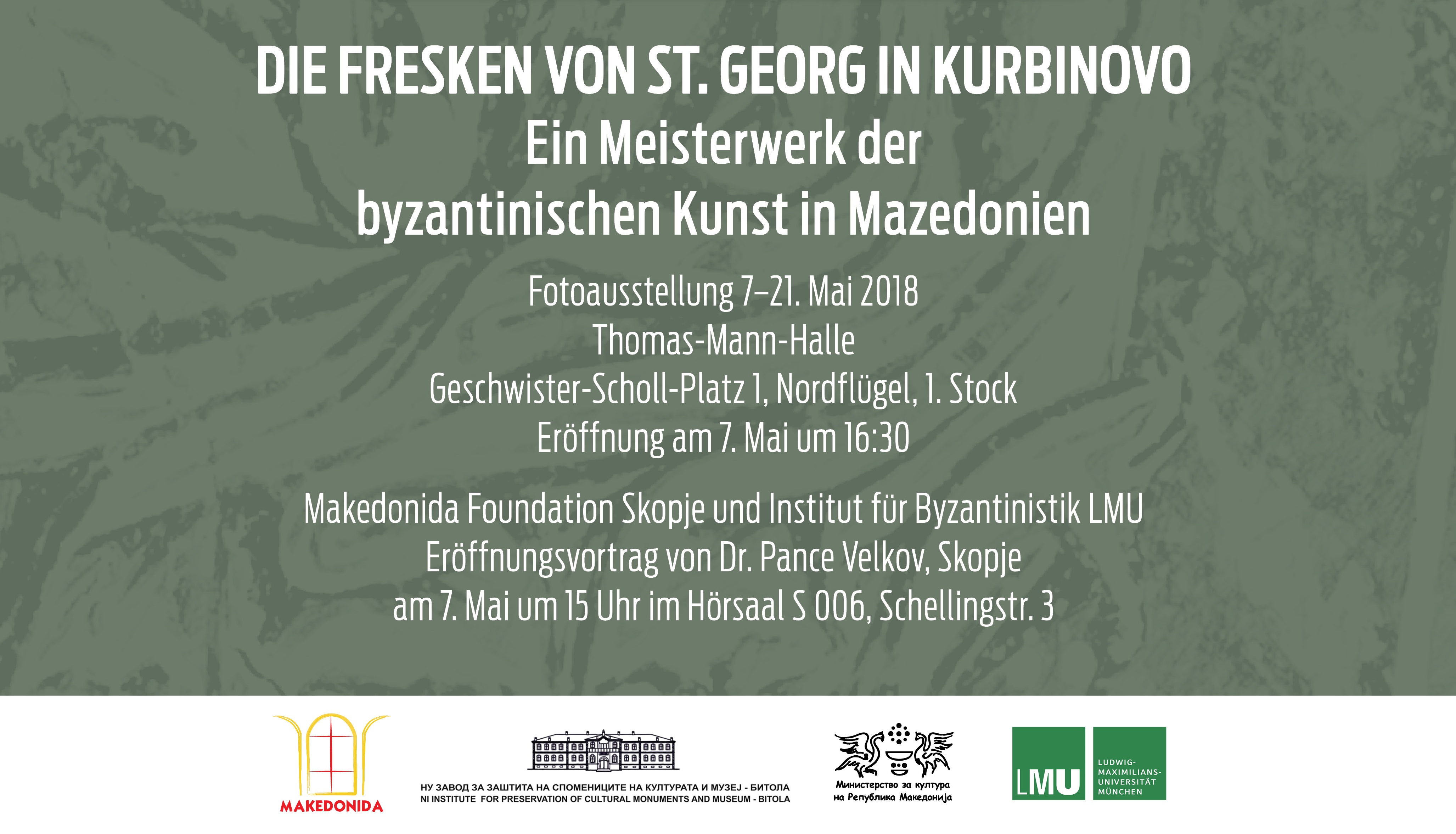FRH Members the Makedonida Foundation are organising a photo exhibition presenting the extraordinary frescoes from the Saint George Church in Kurbinovo, Macedonia, whose original painting started in April 1191. Don’t miss it – running from 7 till 21 May in Munich!

About St. George at Kurbinovo
The church of St George at Kurbinovo is one of the most beautiful enigmas of Byzantine Macedonia. It occupies a picturesque, but otherwise unremarkable site above Lake Presba and the village of Kurbinovo, on a foothill of Mount Pelister. The architecture is simple, a single nave with a pitched roof. The walls are built in a local timber frame construction. Nothing prepares the visitor for the superb quality of the frescoes that decorate all interior walls and rank among the masterpieces of the middle Byzantine period. A faded image of emperor Isaac II Angelos, who reigned from 1185 to 1195 and again from 1203 to 1204, provides a date for the frescoes, but it remains a riddle why a modest building of unknown purpose in an obscure location received such extraordinary decoration.
The interior is divided into nave and sanctuary, and the latter was partly hidden behind an iconostasis and inaccessible to lay people. The frescoes illustrate this divide: The sanctuary is peopled with saintly bishops in liturgical vestments, who congregate around a central altar with the sacrificial Christ Child – the Amnos or Melismos. The scene is echoed by an image of the Virgin with the Christ Child in the dome of the apse. On both sides of the apse two saintly deacons occupy the prosthesis and diaconicon-niches for the preparation of the sacraments. The nave also houses more humble saints, in particular a row of six women along the west wall, three emaciated ascetics to the south of the door and three beatific martyrs on the northern side. Iconic images of Christ on the south wall and of St George on the north wall occupy the places of honour next to the iconostasis and stand out through a larger scale.
An upper register recounts the Life of Christ, starting with the Annunciation on both sides of the apse dome, continuing with the Visitation on the south wall of the sanctuary, with Jesus’ Nativity, Baptism, and Miracles on the south wall of the nave, with his Entry into Jerusalem and his Transfiguration – not in chronological order – on the west wall, and concluding with his Crucifixion and Lamentationon the north wall of the nave, as well as the Harrowing of Hell on the north wall of the sanctuary.In addition, the west wall includes a central image of the Dormition of the Mother of God, one of the most important feasts in the Orthodox calendar.
Above the Dormition, the Ancient of Days among seraphim is part of an upper sphere, much of which has been lost, but which appears to have compensated for the lack of a dome that would otherwise have served as the seat of Heaven. On the north and south walls this upper sphere included rows of standing prophets that normally surrounded the dome. The upper sphere culminates in a panoramic Ascension of Christ above the apse. Overall, the frescoes captivate through a solemn and subtle display of emotions that convey the human drama inherent in the history of salvation and account for the timeless appeal of Kurbinovo.
text by Dr. Philipp Niewöhner






Follow us: